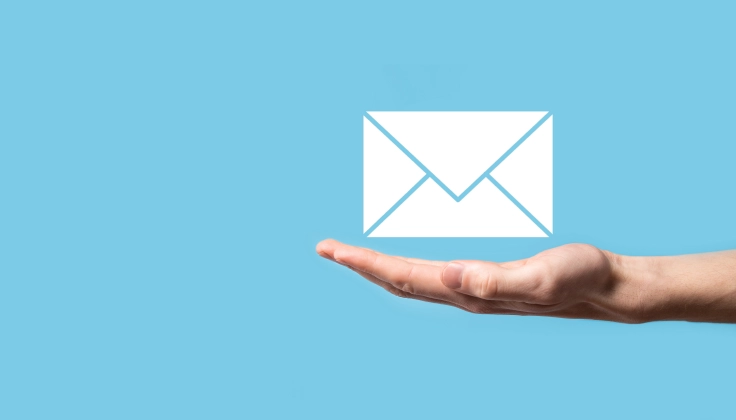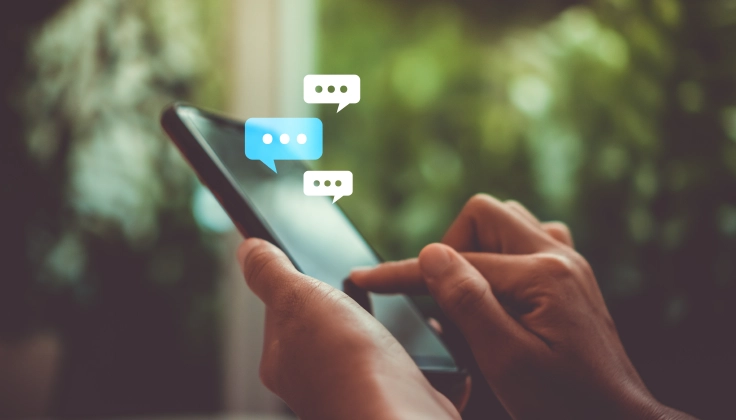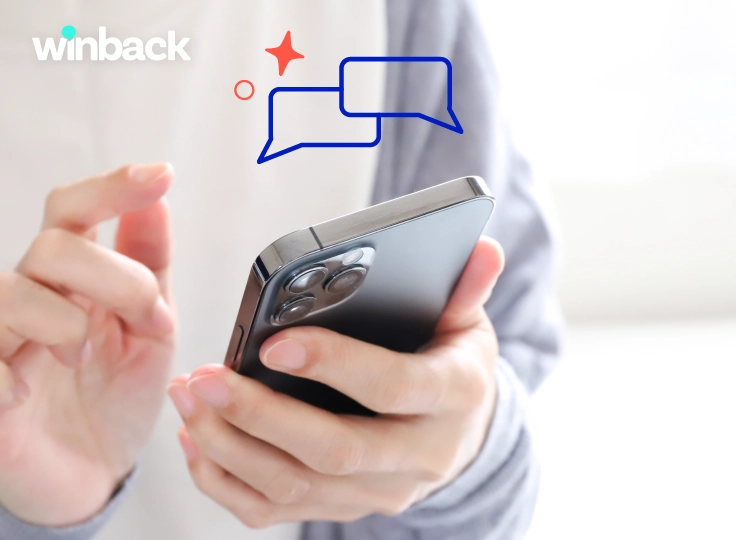“Learn how to craft sales messages that boost conversions and re-engage customers with tools like Winback.”
Sales messages can make or break a business. A well-crafted sales message can turn a cold lead into a loyal customer, while a poorly constructed one can push potential buyers away. In today’s competitive marketplace, writing effective sales messages is more crucial than ever.
This blog will delve into actionable tips and strategies for crafting compelling sales messages that resonate with your audience, drive action, and, ultimately, increase your bottom line. We’ll also explore the role of innovative tools like Winback in refining your sales approach and reclaiming lost customers.

Understanding the Purpose of Sales Messages
Before diving into the specifics, let’s first understand a sales message. In essence, it’s a communication designed to persuade someone to make a purchase or take a specific action. These messages can be delivered through various channels, including emails, SMS, social media, or face-to-face conversations.
The key to a successful sales message lies in understanding your audience. What are their pain points? What solutions are they seeking? The more you know about your customers, the better you can tailor your message to meet their needs.
The Core Components of a Sales Message
A powerful sales message typically consists of several key elements:
- Headline: The first thing your audience sees. It should be attention-grabbing and relevant to their needs.
- Body: This is where you elaborate on the benefits of your product or service. Be clear and concise, and focus on how it can solve the customer’s problem.
- Call to Action (CTA): The CTA is crucial. It tells the reader what action to take next. Whether it’s “Buy Now,” “Sign Up Today,” or “Learn More,” the CTA should be clear and compelling.
- Social Proof: Testimonials, reviews, or case studies can reinforce your message by showing that others have benefited from your product or service.
- Urgency: Creating a sense of urgency can encourage immediate action. Limited-time offers or highlighting scarcity (e.g., “Only 5 left in stock”) can be effective.
How to Write a Winning Sales Message

Now that we’ve covered the basics let’s explore how to craft a winning sales message step-by-step.
1. Know Your Audience
Understanding your target audience is the foundation of any successful sales message. Ask yourself:
- Who are they?
- What are their pain points?
- What solutions are they seeking?
For example, if you’re selling a productivity tool, your target audience might be busy professionals looking to save time. Your message should speak directly to their need for efficiency.
2. Start with a Strong Headline
Your headline is the first impression you’ll make, so it needs to be compelling. It should grab the reader’s attention and entice them to read further. Consider using numbers, questions, or bold statements.
Example: “Unlock the Secret to Doubling Your Productivity in Just 7 Days!”
3. Focus on Benefits, Not Features
Customers don’t buy products; they buy solutions to their problems. Instead of listing features, focus on how your product or service benefits the customer. Explain how it will make their life easier, happier, or more successful.
Example: Instead of saying, “Our software has a user-friendly interface,” say, “Save time and reduce frustration with our easy-to-use software.”
4. Use Simple, Direct Language
Avoid jargon and complicated words. Keep your language simple and direct. Your message should be easy to understand and quickly convey the value of your offering.
5. Include a Clear Call to Action
Your CTA should tell the reader exactly what to do next. Be specific and create a sense of urgency if possible.
Example: “Get started today and see results within 24 hours!”
6. Incorporate Social Proof
People are more likely to trust your product if they see that others have benefited from it. To add credibility to your message, include testimonials, reviews, or case studies.
7. Test and Optimize
Even the best sales messages can be improved. Test different headlines, CTAs, and formats to see what works best. Use A/B testing to compare variations and refine your approach based on the results.
The Role of Tools Like Winback in Sales Messaging

While crafting effective sales messages is an art, tools like Winback can help you refine and automate your approach. Winback specializes in helping businesses re-engage lost customers through targeted email campaigns.
Imagine you have a list of customers who haven’t purchased in six months. Instead of letting them slip away, you can use Winback to send personalized emails designed to rekindle their interest. These emails include special offers, reminders of previous purchases, or even a simple check-in to see how they’re doing.
The beauty of Winback lies in its ability to automate this process, saving you time and effort while maximizing your chances of winning back lost customers. Integrating tools like Winback into your sales strategy ensures that your messages are always timely, relevant, and personalized.
Crafting Sales Messages for Different Platforms
Not all sales messages are created equal; what works on one platform may not work on another. Let’s explore how to tailor your sales messages for different channels.
1. Email
Email remains one of the most effective channels for sales messaging. The key to a successful email campaign is personalization. Use the recipient’s name, reference their past interactions with your brand, and tailor the content to their needs.
Keep your subject line short and compelling, and make sure your CTA is clear and easy to follow. Tools like Winback can help you automate and personalize your email campaigns, making it easier to re-engage customers and drive sales.
2. SMS
SMS marketing is highly effective due to its immediacy. Messages should be short, to the point, and include a clear CTA. Since SMS has a high open rate, it’s a great way to create urgency with limited-time offers or flash sales.
Example: “Exclusive deal just for you! Get 20% off your next purchase when you order by midnight. Shop now: [link].”
3. Social Media
Social media platforms like Facebook, Instagram, and LinkedIn offer unique opportunities for sales messaging. Visual content is crucial here, so pair your message with eye-catching images or videos.
Your message should be engaging and encourage interaction. Use questions, polls, or contests to draw your audience in and make them part of the conversation.
4. In-Person Sales
Your message needs to be clear and adaptable for in-person sales. Listen to the customer’s needs and adjust your pitch accordingly. Focus on building a connection and providing solutions that address their specific concerns.
Common Mistakes to Avoid in Sales Messaging
Even seasoned marketers can fall into common traps when crafting sales messages. Here are some pitfalls to avoid:
1. Being Too Pushy
While being persuasive is essential, being too pushy can turn potential customers off. Instead of aggressively pushing for a sale, focus on building a relationship and providing value.
2. Using Complicated Language
Avoid using jargon or complicated language that might confuse your audience. Keep your message simple, clear, and easy to understand.
3. Failing to Test and Optimize
Don’t assume that your first draft is perfect. Always test different versions of your message to see what resonates best with your audience. Use the data to refine your approach and continuously improve your results.
4. Ignoring the Importance of Timing
The timing of your sales message can be just as important as the content itself. Sending a message at the wrong time can result in it being overlooked or ignored. Pay attention to your audience’s habits and preferences, and time your messages accordingly.
Conclusion
Crafting effective sales messages requires a deep understanding of your audience, a focus on benefits over features, and a commitment to testing and optimization. Following the strategies outlined in this blog can create compelling messages that resonate with your audience and drive action.
Don’t forget the power of tools like Winback to enhance your sales efforts. Whether you’re looking to re-engage lost customers or streamline your email campaigns, these tools can help you stay ahead of the competition and boost your conversions.
The key to successful sales messaging lies in continuous improvement. Stay curious, experiment with new approaches, and always keep your audience’s needs at the forefront of your strategy. With the right approach, your sales messages can become a powerful driver of business growth.
FAQs
1. What is the most essential element of a sales message?
The most crucial element of a sales message is the Call to Action (CTA). Without a clear CTA, your audience won’t know what to do next, which can result in lost opportunities. Make sure your CTA is specific, actionable, and easy to follow.
2. How can I personalize my sales messages?
Personalization involves tailoring your message to the individual recipient. Use their name, reference past purchases, or highlight products and services that align with their interests. Tools like Winback can help you automate and personalize your messages at scale.
3. How do I create a sense of urgency in my sales messages?
Creating urgency can encourage immediate action. You can do this by offering limited-time discounts, highlighting scarcity (e.g., “Only 5 left in stock”), or emphasizing the benefits of taking action now.
4. What role does social proof play in sales messages?
Social proof, such as testimonials, reviews, and case studies, adds credibility to your sales message. It shows that others have benefited from your product or service, which can increase trust and persuade potential customers to take action.
5. How often should I send sales messages?
The frequency of your sales messages depends on your audience and the channel you’re using. A weekly or bi-weekly cadence might be effective for email, while SMS should be used sparingly to avoid overwhelming your audience. Constantly monitor engagement metrics to find the right balance.
6. Can I automate my sales messages?
Yes, automation can help streamline your sales messaging efforts, especially with large audiences. Tools like Winback can automate email campaigns, ensuring your messages are timely, relevant, and personalized.
7. What should I do if my sales messages aren’t converting?
If your sales messages aren’t converting, reviewing and optimizing your approach is time. Test different headlines, CTAs, and content formats. Consider segmenting your audience to create more targeted messages. Analyze the data to identify what’s working and what isn’t, and adjust your strategy accordingly.
 Reading time about
6min
Reading time about
6min
